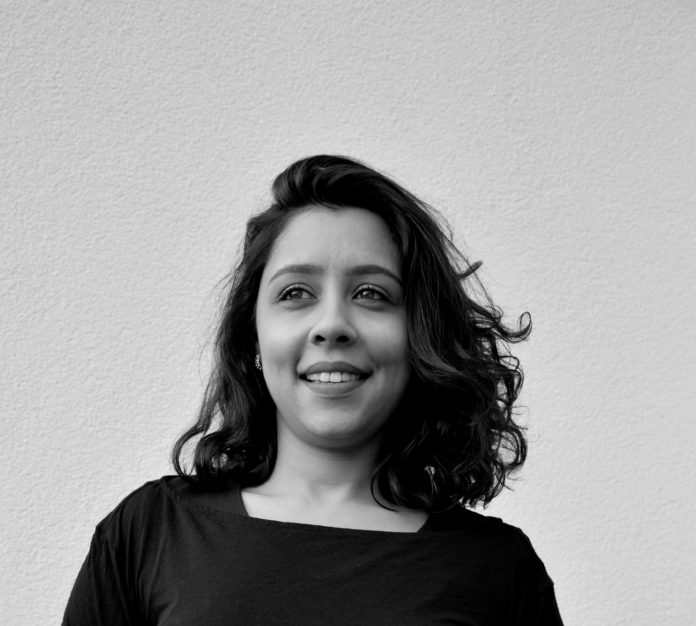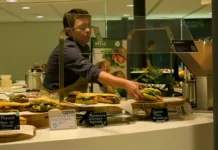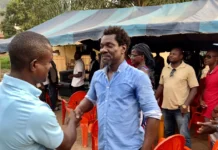‘Nature is the inspiration for my designs’ says Kazerne award winner Shaakira Jassat. Eindhoven News caught up with Shaakira after the Dutch Design Week 2020. Her projects are unique and innovative. She is a designer who is driven by passion and heart. It is impossible not to be inspired by Shaakira and her designs…
EN: Congratulations on the Kazerne Design Award! Can you tell us about the winning moment and the award-winning project?
Shaakira: Thank you. It was a special moment. Ten nominees from the Dutch Design Week 2019 were asked to pitch our projects for the first Kazerne Design Award. I was pleased to get a chance to present my story through the Tea Drop project. A few years back, my home country (South Africa) went through a major drought. The intensity was horrifying and the need to save water hit everyone. That was my spark for creating a Tea Machine. I had travelled to tea plantations in Sri Lanka for my graduation project at Design Academy, Eindhoven. Over there, tea leaves were being withered in large machines and water evaporated. This made me wonder if we can reuse the evaporated water from this production cycle. Part of the awareness that Tea Drop hopes to create is to tell the story of the hidden water consumption for something as mundane as a cup of tea. So it is not a machine to be sold in stores in the future but it’s a time-piece that tells you that today 30 litres of water get used to making a single cup of tea! When I did my presentation, I was happy that I was keeping this story alive. But, I did not think that I would win the award. So when the results were announced, it was indeed a very pleasant surprise.
EN: What a great story behind an even better design! Is there a story behind the innovative name of your Design Studio – Studio Sway?
Shaakira: Yes, indeed! For me, sway really shows the motion – a swaying between the past and the future. In my work, I strive to take the facts and wisdom from the past and regenerate them for the future. So in Studio Sway, this is what inspires me to innovate the future!
EN: Interesting! In your website, you talk about many projects – any particular ones that you want to talk about?
Shaakira: Yes! Shell Dwell. I shared the very first steps of this project online in Dutch Design Week. It is a biologically inspired building block brick using eggshells. I am using kitchen tools and waste to produce it and to investigate how we can be more symbiotic with nature. This is a project in the very early stages, and I will continue to develop it. Another project of mine, the Aquatecture is a redefinition of water management in architecture. It aims to regenerate architecture in the urban environment.
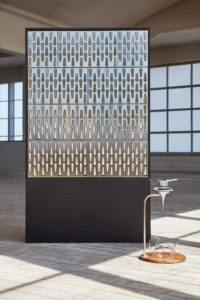
EN: You talk a lot about materials and you have a minor in ceramics. Do you first choose the material and then the design, or is it the other way round?
Shaakira: Interesting!. For me, it is always the ‘Why’ – the ‘Why am I doing this’?. That drives the form and once the form appears, then I choose the material. I love materials, but they do not drive me to make the form. Materials are more a means to realise that form or design. Sometimes, like with the ShellDwell project, the ‘why’ is the actual material itself.
EN: That makes a lot of sense! These days there is a need to design for the pandemic like ‘Design for Distance’. Any examples of how you design differently in these times?
Shaakira: It was a moment of questioning what we do and how we are doing it. In my area, travel for field research is critical. I really miss that. So I have had to find a new balance and decide on the best carbon foot-print for my design process. It is difficult to stay isolated and create a design that makes a difference. In general, I am very sensitive to ecology, and nature inspires me in my design. That has strengthened in this pandemic.
EN: You talked about your design process. Do your childhood experiences influence the way you approach design? Has the move to Eindhoven brought about any change?
Shaakira: Yes. Definitely. I grew up in South African in a new democracy. My parents were passionate followers of the political set up in the country. Naturally, growing up in such an environment has shaped who I am. Even with nature, I tend to think of a democratic approach, and that is reflected in my design. Being in Eindhoven has been humbling because I have had to re-think a lot of things. I moved from a corporate background to design school here when I was thirty and I have had to do a lot of un-learning. I think you open yourself in different ways when you are exposed to a new culture. It was difficult and took a while, but it happened.
EN: What inspired you to make this move from architecture back to design school?
Shaakira: As an architect, you are designing spaces. So there is a foundation in design. Even though I was a successful corporate architect, I felt that I wanted to follow my freedom of expression. There were so many things I could make with my hands and share through materials. That is how the minor in ceramics happened.
EN: What is the best part of being a designer?
Shaakira: Oh! the freedom that you have to shape something and to share. I strongly believe that design influences human and non-human living beings. So their inputs are very important during the process.
EN: Do you leverage social media to gather inputs and in promoting your work?
Shaakira: Yes, it is quite important and all the more critical during the pandemic. You should be able to use it as a tool to ask questions and engage others in your design process. A good balance needs to be achieved to interact physically as well as online.
EN: Where do you find the inspiration to achieve all this?
Shaakira: I would say its nature. I would take a walk outside for inspiration – colours, textures and how nature is dealing with things. In fact, for Shell Dwell, the idea comes from the egg – it is housing life and is a form of architecture on its own. What better material to inspire a building component? Having nature as inspiration automatically makes the design simple. The Aquatecture project is an example of that. I am highly inspired by the Namib Desert Beetle as well as Tillandsia and Bromeliad plants; all with a built-in ability to harvest their own water. Another advantage is that such designs are friendly for the environment – the Tea Drop project as a case in point. It takes a lot to keep the design simple!
EN: Now for some fun. If you were to have coffee (or tea) with a famous Dutch Designer (past or present)…
Shaakira: In South Africa, I used to attend these Design Indaba conferences and the Dutch speakers used to be so inspiring. That is why I chose to move to Design school in the land of innovation. I would love to sit across Iris van Herpen for a cup of coffee. Her work is visionary and the part that attracts me the most is that it is deep-rooted in nature and combines architecture and science.
EN: What is the one design tool you cannot live without?
Shaakira: My pencil! That’s where it starts – the doodles that capture what is in my mind and heart. I did all the research, interviews and videos for the Tea Drop project and then I sat and drew my thoughts on paper. Many months later, that is exactly what the Tea Machine looks like and it is amazing!
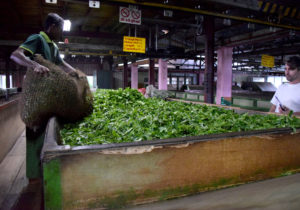
Eindhoven News wishes this inspiring designer the very best for the future! You can follow Shaakira’s designs at Studio Sway
For Eindhoven News: Muktha Kartik Iyer
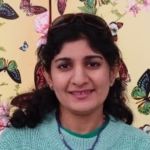 Muktha is a Process Consultant by profession and is passionate about books, languages and animals. She is working on her dream of publishing a rack full of books of her own.
Muktha is a Process Consultant by profession and is passionate about books, languages and animals. She is working on her dream of publishing a rack full of books of her own.


